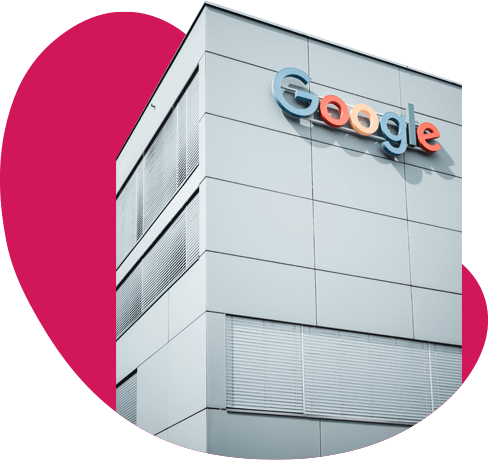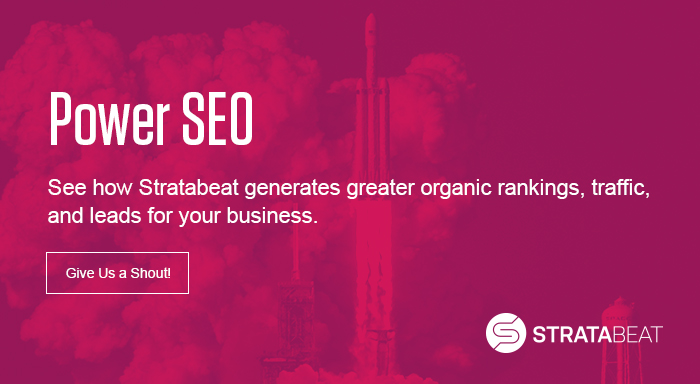How to Capture Greater Google SERP Real Estate

If you’re a company looking to gain leverage and long-term value, you might look to purchase the buildings or land on which you operate your business. McDonald’s famously purchased the land of their fast-food locations and proceeded to build a war chest of roughly $40 billion in real estate value. The more land and buildings you own, the greater the empire.
In the war for attention, capturing greater screen real estate in the Google search engine results page (SERP) is similarly crucial. The company that captures multiple rankings in the Google top 10 will have a significant business advantage over competitors for a given query.
Take a Multi-Pronged Approach to SEO
Capturing real estate in the Google top 10 isn’t as straightforward as it once was. A decade ago, all you had to do to capture Google page one rankings was optimize your website for text-based search results.
But today, to capture as much Google real estate as possible, you should take a multi-pronged approach:
- Optimize your pages and posts
- Optimize for SERP features such as People Also Ask (PAA), videos, and FAQs
- Engage in a multi-asset approach to SEO
- Leverage third-party web properties for incremental rankings
Google SERP Dominance in Action
For example, one Stratabeat client was able to dominate the Google SERP for its top, non-branded SEO keyword through the following combination of rankings:
- Main corporate website
- Microsite #1
- Microsite #2
- Press coverage by third parties
- Press release on the company site
- Images
In this post, learn strategies you can use to dominate the Google top 10 that are far more effective than merely mapping one web page to one target SEO keyword.
The Benefits of Dominating the Google Search Results for Your Market
Many marketing teams are thinking too narrowly in terms of the potential of organic search. By taking a multi-asset approach, you can capture more real estate in the SERP, driving more traffic and leads for your business.
The Google SERP Is A Zero-Sum Game

Major SEO Trends to Know in 2024
From AI to algorithm updates, take a look at the most important SEO trends you need to know. Read the PostStart with a SERP Analysis
An in-depth SERP analysis enables you to not only better align with search intent and increase the probability of achieving a high ranking in Google, but to also identify ways to differentiate your content from competitors.
Stratabeat Achieved Explosive Organic Traffic Gains for a Client in a Hyper-Competitive Vertical
See HowCapture as Much SERP Real Estate as Possible
Don’t overlook PAA questions as an effective opportunity to capture more of the Google SERP. Useful tools to identify the questions your audience is asking include AlsoAsked, Answer Socrates, Semrush, and thruuu.
Videos
Having one or more of your videos show up in the search results can be incredibly powerful. It gives you an opportunity to get your message across directly in a format that’s emotionally engaging.
To rank your video in the search results, produce high-quality videos with compelling content and optimize them properly. Make sure your videos are informative. Furthermore, use the right title, descriptions, and tags. This will help ensure that Google is able to understand the content of your video and determine whether it’s relevant to a particular query. Check out Stratabeat’s 31 steps for YouTube SEO.
In certain cases, it can also help to upload a transcript of your video so Google knows exactly what the content is and what subjects it relates to. (Note, this is not always realistic or advisable, depending on the page.)
Images
Images are underrated when it comes to Google search results. You can use images to stand out and provide searchers with something eye-catching to grab their attention. With images, you can share infographics, pull quotes, slides from a presentation, data visualizations, etc.
To rank in the image results, follow basic image optimization practices such as:
- Using descriptive image titles
- Using descriptive file names
- Including relevant keywords in the image alt text when appropriate
PR and News
Especially in B2B SEO, one complementary approach to grabbing more Google SERP real estate is to engage in coordinated PR with your SEO program. This can come in the form of press releases, interviews, campaigns, newsjacking, contributions to a reporter’s article, etc.
If your brand appears in the SERP’s “Top Stories”, you’ll ensure that more SERP real estate is focused on your brand. To grab a spot in the news, conduct PR on a regular basis with an eye towards the topics for which you want greater visibility in the Google SERP. Build relationships with the publications that matter most in your industry. But go beyond the obvious choices, and forge relationships with bloggers, podcasters, and others covering news topics in your industry.
PR is a great way to increase the overall strength of your brand. When Google sees positive brand signals about your brand springing up in different places on the internet, it will be more likely to rank you higher in the search results. This can help you capture even more of the Google real estate for your targeted keywords. And when your audience sees you in the news, it strengthens brand perception, likely leading to a higher click-through rate for your standard rankings.
FAQs
Depending on the keyword, frequently asked questions (FAQs) about a topic can appear in the Google SERPs, occupying valuable real estate on the screen. Clicking on one of these questions expands it and provides an answer.
Beyond FAQs appearing in the SERP in between rankings on the page, you can also use FAQ structured data to become eligible for FAQ content to specifically appear along with your organic listing in the SERPs.
Either way, FAQs are one more tool for capturing more of the SERP.
Microsites and Off-Domain Blogs
Having a website, microsite, or blog that is separate from your primary website provides additional ways to dominate the Google landscape. Complementary websites, microsites, and blogs can be used to target niche topics and share more detailed information.
While they won’t necessarily rank better than your primary website (depending on the keyword), they can help you claim more of the search results. By having multiple sites, you can target non-branded keywords both from your domain and from the off-domain sites. As all of these start to rank in the search results, you start to dominate the SERP while pushing competitors lower and out of view.
One company that took this approach is Arrow Electronics. They acquired more than 50 media websites, including EE Times, EDN, Datasheets.com, SiliconExpert, and EEWeb, and essentially became the media in their industry in order to better target their audience of electrical engineers. Talk about increasing one’s SEO horsepower!
Byline Articles
Writing articles and publishing them on authoritative, third-party websites is a highly effective way to strengthen your brand equity and “own” yet more of the search results.
Think about it. If the third-party site is well-established and authoritative, there’s a good chance it will show up in the search results for numerous queries you’re targeting. If your name is associated with that site, it passes some of its earned authority to your brand. You gain through the expanded coverage in the SERP, while strengthening brand perception at the same time. And again, every Google ranking that is focused on your brand is one more example where your competitors are being pushed down the page and out of view.
Social Media
Social media posts, such as Tweets, allow you to demonstrate the personality of your brand. They are a great way to engage with your audience and show them that you are more than a faceless entity. They also are a way for you to share your knowledge of relevant subjects and position yourself as an expert in your industry.
If you want your social media posts to show in the search results, you need to be regularly sharing valuable, relevant information with your audience. You can’t post once a month and expect to appear in the search results. You need to be active and engaged with your audience.
Knowledge Panel
The knowledge panel is the box on the right-hand side of the search results. It includes basic information about a topic such as the definition, facts, images, etc. It is a valuable piece of real estate in the search results.
To capture a spot in the knowledge panel, you need to have accurate information about your brand on sites such as Google Business Profile, Wikipedia, etc. You also need to ensure that you are actively managing your brand’s presence on these sites. This means making sure everything is up-to-date and accurate.
Paid Search Ads
If you want to own every square inch of the search results, you may need to also invest money in paid search ads for your top priority keywords. Doing so will allow you to appear at the very top of the page. Plus, they come with the added bonus of being highly targeted.
Paid search ads are a complementary way to ensure that your brand is seen by searchers for your money pages such as your product, service, solution, and category pages. Just be aware that paid search is expensive and is typically not cost-effective for top-of-the-funnel keywords.


